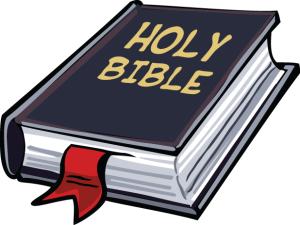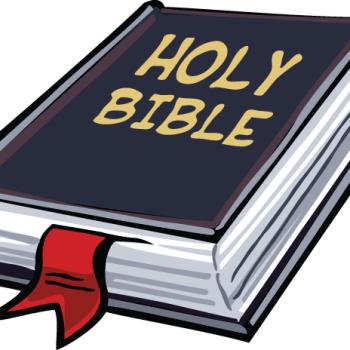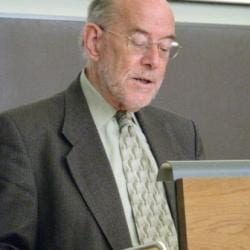The Gospel of John reports that early in Jesus’ public ministry he entered Jerusalem’s temple, got angry at its ungodly commercialism in selling animals there (which should have been outside), and made a whip to expel those merchants and moneychangers (John 2.13-16). Yet, all three synoptic gospels report a similar incident at the end of Jesus’ ministry, during Passion Week (Matt 21.12-13; Mark 11.15-18; Luke 19.45-48). Did Jesus “cleanse the temple” on two separate occasions? That’s what a comparison of John’s gospel with the synoptic gospels indicates. Or did he cleanse the temple once, as historical critics allege and most scholars now agree (G.R. Beasley-Murray, John, p. 38)? If so, John has misplaced it in his gospel. Skeptics cite this as prime evidence that the New Testament (NT) gospels are untrustworthy.
Indeed, to most Bible readers, interpreting one cleansing impugns the integrity of the gospel writers and thus the historical reliability of their accounts. Such historians themselves approach the NT gospels with some skepticism about their history. This tendency can result in the investigative skills of these historians being overly-hyped. While I’ve learned much from such scholars, sometimes I conclude that they would make poor detectives or trial judges! In difficult cases, scholars should attribute some benefit of the doubt to the gospel evangelists. On the other hand, conservative interpreters can overly strain to harmonize the NT gospels and thereby disrespect their details. What is needed is a fair and balanced approach to these gospels, which sometimes must render harmonizing questions unresolved.
But this is not the case in the NT gospel reports about Jesus cleansing the temple. In my gospel-harmonizing book, The Gospels Interwoven (1987), I address this question (130 in all). I conclude that Jesus cleansed the temple at two different times (pp. 332-333), just as the gospels report. My reasons include (1) the application of different OT quotations to the two events, (2) only John reporting that Jesus prophesied about destroying the temple, (3) the synoptics omitting an earlier cleansing since they did not report Jesus’ earlier ministry, whereas John did, and (4) John being very chronological as well as meticulously accurate about geography, customs, and numbers (e.g., John 2.1, 12-13), indicating that John was just as accurate in placing a cleansing of the temple early in Jesus’ public ministry.
It is now twenty-five years since my book was published, and I realize I could have said more in support of two cleansings. Historical critics cite similarities in details reported by John and the synoptic, asserting this indicates a single cleansing. But how could it have been otherwise if the same problem still existed? Actually, there are more gospel details, plus a lack thereof, which indicate two cleansings.
First, John reports Jesus’ temple cleansing and the Jewish authorities immediately asking him of his right to do so. They said, “What sign can you show us for doing this?” (John 2.18). They likely asked this since (1) people believed Jesus was a prophet, (2) this act was what a prophet might do (cf. Zechariah 14.21 NRSV), and (3) the Torah required signs of prophets (Deuteronomy 18.21-22; cf. 13.1-3). John says Jesus replied, “Destroy this temple, and in three days I will raise it up” (John 2.19). But the synoptists do not report this. It is most unlikely they would have omitted such an ambiguous and provocative reply if it had occurred. And this is especially so because the synoptists twice report that Jesus’ enemies accused him of making such a statement, though they varied in the exact words (Mt 26.61; 27.40; Mk 14.58; 15.29; cf. Ac 6.14). If he had said it during their reported cleansing, they would have included it to link to these accusations.
Second, the synoptists record that the religious authorities asked Jesus, “By what authority are you doing these things?” (Matt 21.23/Mark 11.27/Luke 20.2). Historical-critical scholars insist that even though the synoptists interject other events, and even Jesus retiring to Bethany for the night, between their report of Jesus’ temple cleansing and this question asked by authorities, critics assume that the question immediately followed Jesus’ temple cleansing. But a close examination of the synoptic accounts reveals that Jesus cleansed the temple on Monday of Passion Week, and this question was posed to him on Tuesday,[1] so that they are not linked. Instead, Jesus was asked regarding all “these things” he was doing that week, not one thing—the temple cleansing. There were other things Jesus was doing that week that were more important, which were “signs” in John’s vocabulary, raising the question of Jesus’ identity.
Third, the question reported by John and the question reported by the synoptists are different, further indicating two separate cleansings. Demanding a sign and inquiring about one’s authority to act, although related, are not the same. Early in Jesus’ ministry, Jews attending temple feasts had not seen Jesus perform any miracles, that is, signs, which consisted mostly of healings and exorcisms. In contrast, Matthew reports Jesus’ temple cleansing during Passion Week and immediately states, “The blind and the lame came to him in the temple, and he cured them…. the chief priests and the scribes saw the amazing things that he did” (Mt 21.14-15). Then Matthew records that Jesus was asked the question the next day (vv. 17-18, 23). And John says of Jesus during Passion Week, “Although he had performed so many signs in their presence, they did not believe in him” (John 12.37). John seems to refer to the Jews in general who attended Passover that week; but he may have been referring more particularly to the religious authorities. Regardless, there obviously was no need for them to demand a sign from Jesus at that time, since many people, likely including some of them, had witnessed several of them by Jesus.
Fourth, and the final nail in the coffin of the critics’ one cleansing, is the overwhelming evidence of the mention of forty-six years. For, John reports that when Jesus said he would raise the temple in three days, “The Jews then said, ‘This temple has been under construction for forty-six years, and will you raise it up in three days?’” (John 2.20). John then adds this explication, “But he was speaking of the temple of his body” (v. 21). This explains why various people later accused Jesus of claiming that he would destroy the temple and rebuild it in three days. Regardless, everyone who heard this exchange between Jesus and these religious authorities reported by John, as well as many of the subsequent, early, Jewish readers of his gospel, would have known when this construction of the second temple had begun and therefore how many years had transpired, that it was indeed forty-six years.
Now, it is difficult to establish the exact length of time of Jesus’ public ministry, or even what year it began and what year it ended with his death. Scholars believe Jesus died between 29 and 36 CE; yet, it is generally accepted that he died 30 CE. Josephus reports that Herod began construction on renovating the temple in 20-19 BCE (Antiquities of the Jews, 15, 11, 1). But there is no certainty on this date or that it refers to some other time than the actual beginning of reconstruction of the entire temple. Plus, our Gregorian calendar is off a few years. Raymond E. Brown (John I-XII, p. 116) concludes that, according to John’s location of the temple cleansing in his gospel, it would have occurred in the year 28 CE, which indeed would likely put Jesus’ death in the year 30 CE. Most scholars accept this date.
Regardless, the relevance of John’s mention of forty-six years in order to decide whether Jesus cleansed the temple once or twice does not depend on properly dating Jesus’ public ministry. Why not?
John reports that Jesus’ public ministry included his attendance at three Passovers (John 2.13, 23; 6.4; 11.55—12.1). Thus, Jesus’ public ministry lasted at least two years. If Jesus cleansed the temple once, and it occurred during Passion Week, the temple reconstruction had been in progress for forty-eight years, not forty-six years as in John’s account. People would have known these facts. Thus, according to John there is a glaring discrepancy regarding the number of years that the temple had been undergoing reconstruction if Jesus cleansed the temple a single time, it being during Passion Week.
In conclusion, when reading about Jesus in the NT gospels, it is best to respect its authors and diligently search for evidence therein which affirms Jesus said and did what those evangelists report.
[1] Jesus arrived near Jerusalem on Sunday (John 12.1), rode down Mt. Olivet on a donkey, entered the temple late, looked around and left, retiring that night at Bethany. On Monday, he cursed the fig tree as a symbol of what he was about to do—enter the temple and cleanse it. He again retired that evening at Bethany. On Tuesday, they saw the withered fig tree, entered the temple, and Jesus was asked about his authority.












